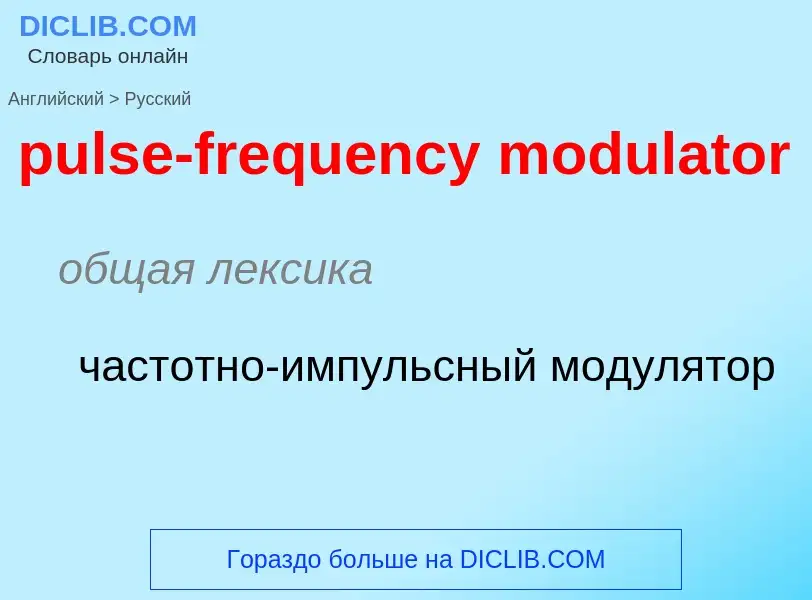Translation and analysis of words by ChatGPT artificial intelligence
On this page you can get a detailed analysis of a word or phrase, produced by the best artificial intelligence technology to date:
- how the word is used
- frequency of use
- it is used more often in oral or written speech
- word translation options
- usage examples (several phrases with translation)
- etymology
pulse-frequency modulator - translation to russian
общая лексика
частотно-импульсный модулятор
общая лексика
частотно-импульсная модуляция
Wikipedia
Pulse-width modulation (PWM), or pulse-duration modulation (PDM), is a method of controlling the average power delivered by an electrical signal. The average value of voltage (and current) fed to the load is controlled by switching the supply between 0 and 100% at a rate faster than it takes the load to change significantly. The longer the switch is on, the higher the total power supplied to the load. Along with maximum power point tracking (MPPT), it is one of the primary methods of reducing the output of solar panels to that which can be utilized by a battery. PWM is particularly suited for running inertial loads such as motors, which are not as easily affected by this discrete switching. The goal of PWM is to control a load; however, the PWM switching frequency must be selected carefully in order to smoothly do so.
The PWM switching frequency can vary greatly depending on load and application. For example, switching only has to be done several times a minute in an electric stove; 100 or 120 Hz (double of the utility frequency) in a lamp dimmer; between a few kilohertz (kHz) and tens of kHz for a motor drive; and well into the tens or hundreds of kHz in audio amplifiers and computer power supplies. Choosing a switching frequency that is too high for the application results in smooth control of the load, but may cause premature failure of the mechanical control components. Selecting a switching frequency that is too low for the application causes oscillations in the load. The main advantage of PWM is that power loss in the switching devices is very low. When a switch is off there is practically no current, and when it is on and power is being transferred to the load, there is almost no voltage drop across the switch. Power loss, being the product of voltage and current, is thus in both cases close to zero. PWM also works well with digital controls, which, because of their on/off nature, can easily set the needed duty cycle. PWM has also been used in certain communication systems where its duty cycle has been used to convey information over a communications channel.
In electronics, many modern microcontrollers (MCUs) integrate PWM controllers exposed to external pins as peripheral devices under firmware control by means of internal programming interfaces. These are commonly used for direct current (DC) motor control in robotics, switched-mode power supply regulation, and other applications.




![Hz]] Hz]]](https://commons.wikimedia.org/wiki/Special:FilePath/Pendulum-no-text.gif?width=200)
